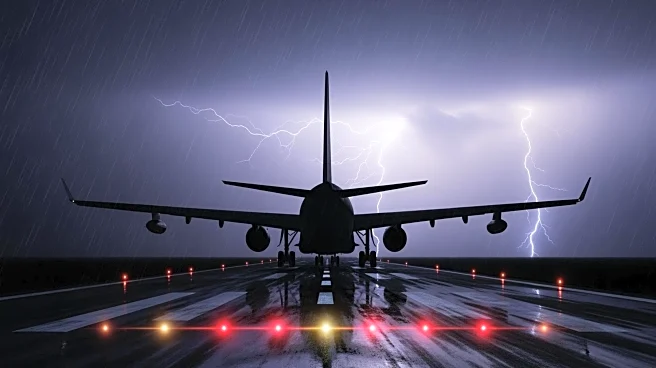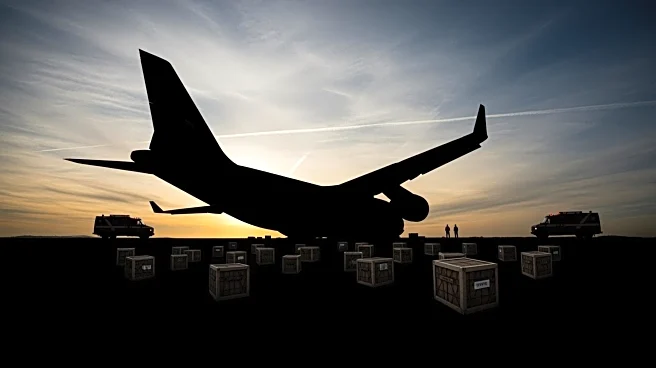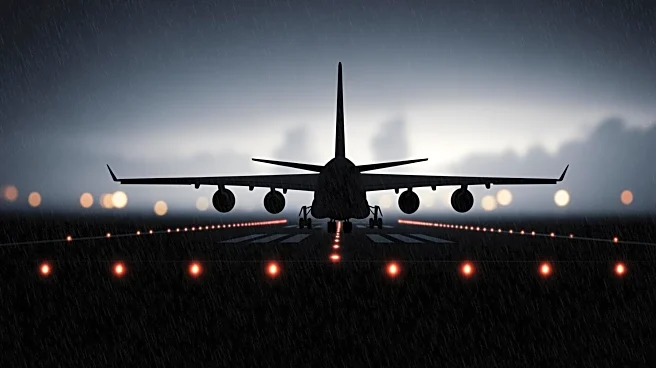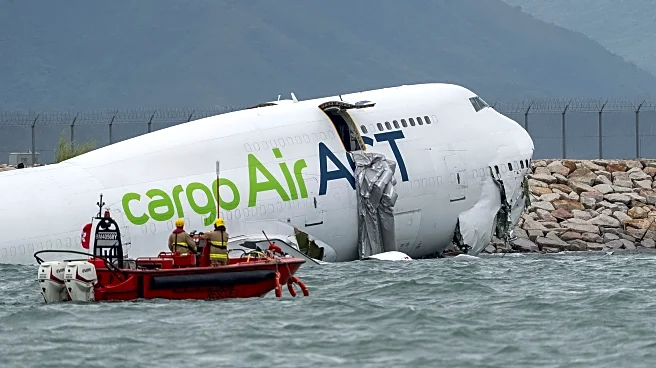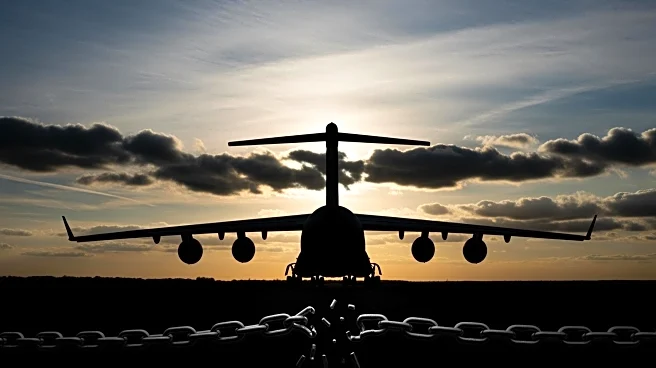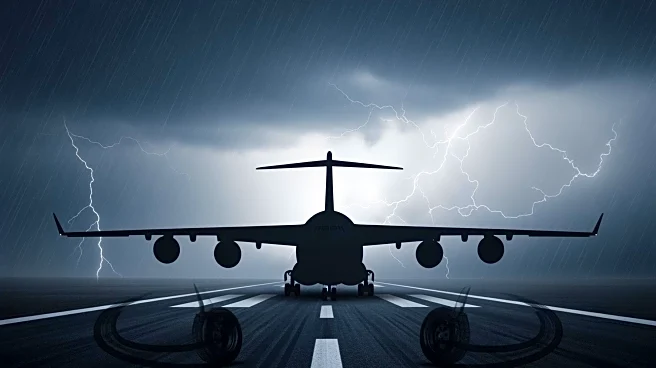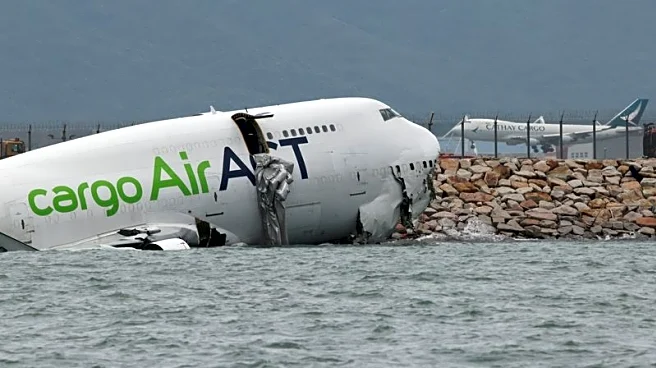What's Happening?
A cargo aircraft operated by Turkish airline Air ACT, flying from Dubai, skidded off the runway into the sea while landing at Hong Kong International Airport. The incident occurred at approximately 3:50
a.m. local time. The aircraft, a Boeing 747 freighter, was wet-leased for Emirates SkyCargo and was identified as flight EK9788. Upon landing, the plane veered off the runway, colliding with a patrol car, which resulted in the deaths of two security workers trapped in the vehicle. Four crew members aboard the aircraft were rescued and taken to the hospital, with no reported injuries. The northern runway of the airport has been closed following the accident, while the south and central runways remain operational. Authorities are investigating the cause of the crash, considering factors such as weather, runway conditions, and the aircraft itself.
Why It's Important?
The accident highlights the critical importance of runway safety and emergency response protocols at major international airports. The closure of the northern runway at Hong Kong International Airport could lead to disruptions in flight schedules and impact cargo operations, affecting logistics and supply chains. The incident also underscores the need for thorough investigations to prevent future occurrences and ensure the safety of airport personnel and passengers. The involvement of a major cargo operator like Emirates SkyCargo emphasizes the potential economic implications, as cargo flights are integral to global trade and commerce.
What's Next?
Investigations are underway to determine the exact cause of the accident, with authorities examining various factors including weather conditions and aircraft performance. The findings could lead to changes in airport safety protocols and operational procedures. Airlines and airport operators may review their emergency response strategies to enhance safety measures. The closure of the northern runway may necessitate adjustments in flight operations, potentially affecting passenger and cargo flights. Stakeholders in the aviation industry will be closely monitoring the situation to assess any long-term impacts on airport operations and safety standards.
Beyond the Headlines
The incident raises questions about the safety of wet-leased aircraft and the responsibilities of both the leasing and operating airlines in ensuring aircraft safety. It also highlights the challenges faced by airport ground personnel in emergency situations, emphasizing the need for robust training and preparedness. The accident could prompt discussions on international aviation safety standards and the role of regulatory bodies in enforcing compliance.


